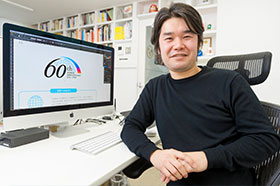How to put the “thoughts you want to convey” into a small logo
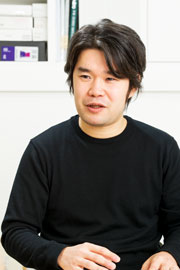 |
My job is called branding design, which conveys the images and thoughts of companies and products to many people through designs. For easier understanding, I can say the job is to create the company’s logos and design the products’ packages.
Logos are used in various places, including business cards, products, brochures, and signs in towns. Into a logo I densely put the thoughts that each company wishes to convey, such as its management philosophy, and I share this with their consumers. Also, I want to have the logo motivate the company’s employees, so I design strong but versatile logos. It is not easy to do, but this is the attractiveness of this work. I feel a sense of achievement when I see the company use the logo as their “face” for a long period of time.
As for packaging designs, I have mainly designed those products you find in supermarkets or convenience stores, such as coffee, tea, and snacks. Packaging is an important factor that makes consumers decide whether or not to buy. As such a decision is made instantly, the hard part is to have my design appeal to people’s senses more strongly than other designs. I am trying to design each product to prompt consumers to pick it up in their hands.
In branding design, the first important thing is to carefully listen and understand the companies’ thoughts and goals. This is because in these thoughts that they want to convey through logos or packages we can find some tips for designs.
Then, to form their thoughts, I input some information by collecting materials related to the companies or products, for example, and develop images by drawing a number of design sketches. In addition to the information from my clients, I consider it important to walk around in cities and check shelves in supermarkets, to find out the current trend from the people’s viewpoint and feel it myself.
Reading comprehension and thinking abilities gained through my Kumon studies are still useful in my current job
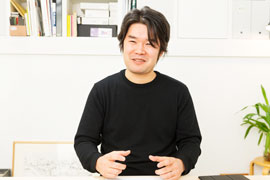 |
The suburbs of Saitama Prefecture, where I spent my childhood, are a peaceful place where wooded areas and rice fields spread out. I used to run and play around with my friends until it got dark. I think I was quite a usual child, playing games and reading a lot of manga.
At that time, I had various dreams, such as becoming an astronaut and doctor. But I always enjoyed creating something and sharing images through pictures and texts. I believe that in this aspect, my father had a great influence on me. He was an office worker but once worked in drafting for a while. So there was a drawing board at our house, and he had a selection of paintbrushes and compasses. He often drew illustrations for me and taught me how to draw, and he still enjoys miniature painting of plants and other objects, even today.
My mother loves cooking, and she makes jam of seasonal fruits and miso, and even clothes by hand. I have the impression that both of my parents valued their daily lives and enjoyed doing what they liked. This may be the reason why they didn’t tell me to study so much and let me do what I wanted to do in the way that I wanted.
It was because of my brother, who is three years older than me, that I started to study at a Kumon Center. I began Kumon at the age of four and continued until my years at junior high school, even after I moved to Nagano and changed the Center. I studied Japanese, math, and English, and among them, my favorite was Japanese.
Kumon Japanese materials use a part of stories and novels. Reading comprehension was my favorite part, where I try to read and understand the feelings of the characters. My mother read the rest of the story in a book for me, as well as those books listed in the Kumon recommended books list. Thanks to such efforts by her, I came to love books. I could successfully advance in my worksheet study and was honored as an ASHR student.
I feel the reading comprehension that I liked to work on, which is to read and understand people’s thoughts, is really helping me as a designer. Designing is not simply to form something; you need the ability to understand what your client tells you, as well as social situations. You also need thinking ability and verbal expressions to logically explain what you designed. Actually, these are basic strengths that can be helpful for any job. I think I could enhance the foundation through Kumon study.
What was a trigger for Mr. Ono to choose his current path?
An “encounter of destiny” with a magazine in his university days when he was worrying about his career path
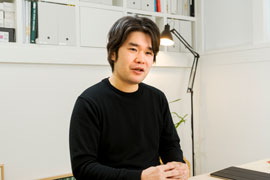 |
I was doing well at elementary school, but my grades significantly declined around my second year at junior high school. I found it quite serious and so I went back to the content for first-graders (junior high school) and worked very hard until I could recover somehow.
After entering a private senior high school in Saitama Prefecture, I joined the rugby and photography clubs while also doing what I like, such as designing T-shirts and taking photos with art-lover friends. I now think the direction of my future path may have been set because I worked deeply on what interested me at that time.
As the school was affiliated with Waseda University, I advanced to the Department of Architecture at the university’s School of Creative Science and Engineering. However, I was actually not particularly interested in architecture; rather, my wish was to enter the fields of graphic design, illustration, or art, which I had been interested in since my childhood. Yet, as the university did not have related departments, I chose architecture because I thought it was the closest to these fields.
After entering the university, naturally I met only those who had a strong passion for architecture. The level of their assignment work was so high, and I was just shocked recognizing the difference from myself. I also became aware that I may not have had as strong a passion for architecture as they did.
Time simply went by, while I kept holding on to such a halfway feeling. However, a turning point came to me at the end of my third year at university, when the season for job hunting started. The majority of students from the Department of Architecture advance to graduate school, but I was not sure whether I should get a job or go to graduate school after my graduation. Then a magazine that I coincidently picked up at a bookstore determined my destiny. The magazine featured corporate identity (CI) and showed a number of companies’ logo marks. When I saw them, I knew intuitively that it was what I wanted to do.
One of the design companies introduced in the magazine was the U.S.-based Landor Associates. Knowing that the company designs logos of global companies and brands, I felt, “I also want to create logos at this company!” and searched its homepage as soon as I went home. Then I found the company was not recruiting anyone at that time, but I sent them an inquiry through e-mail, which brought me the opportunity to work there as a part-timer. So in my fourth year at university, I did a part-time job three days a week there and spent the rest of my days doing graduation work.
Related links
ONO BRAND DESIGN Website
Page commemorating the 60th anniversary of Kumon’s foundation
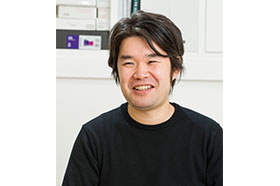 | Interviews from the Second Part -What Mr. Ono keeps in mind in his design job |

